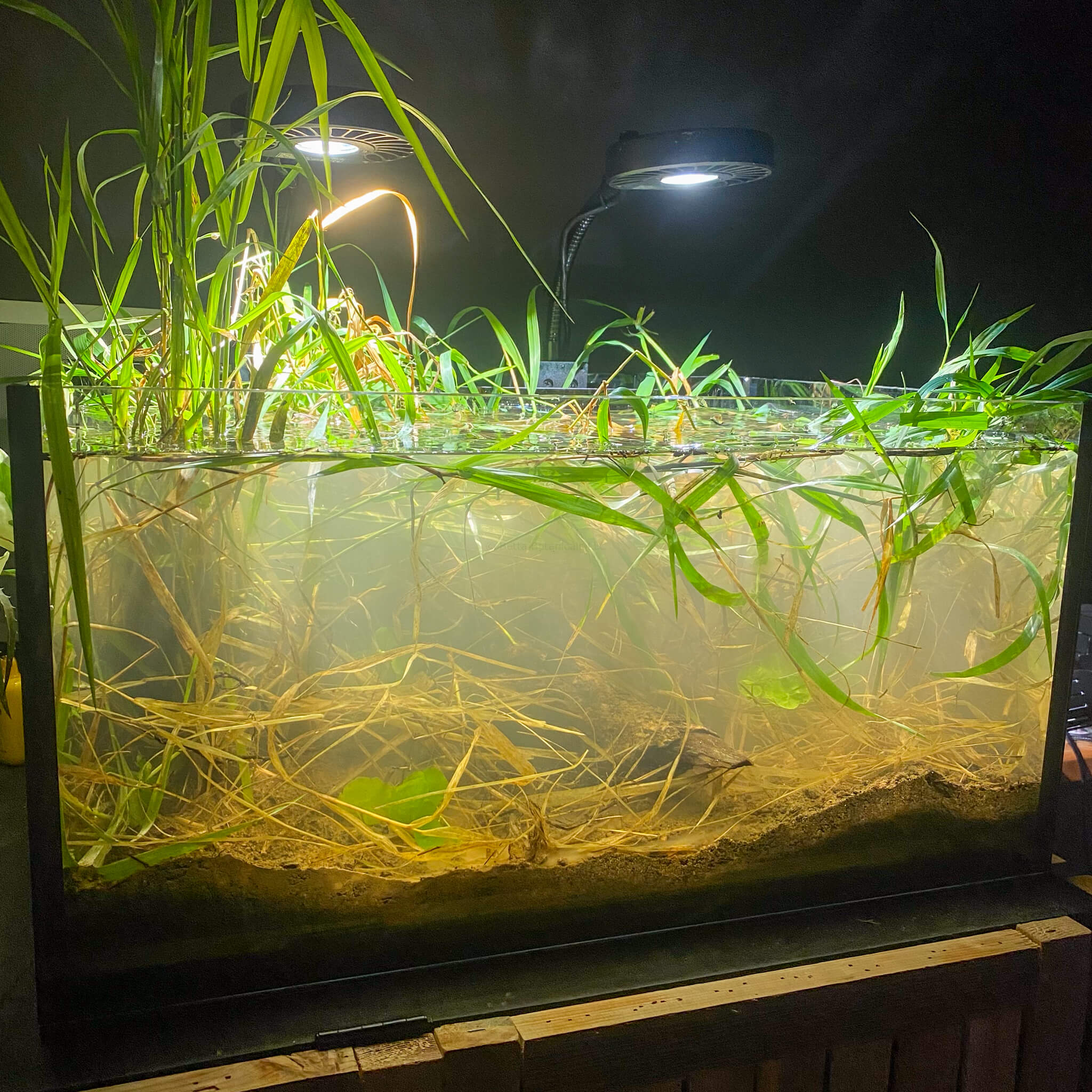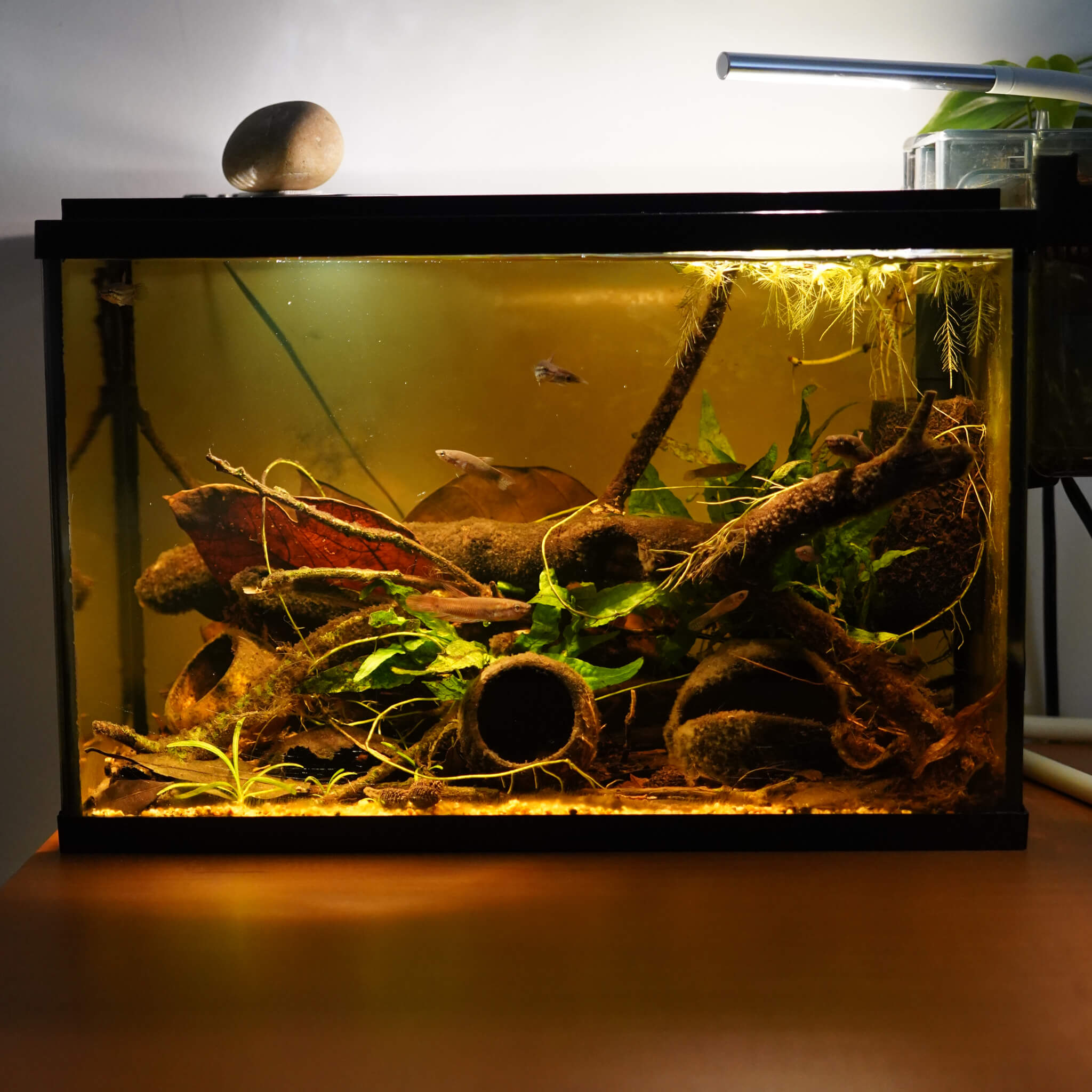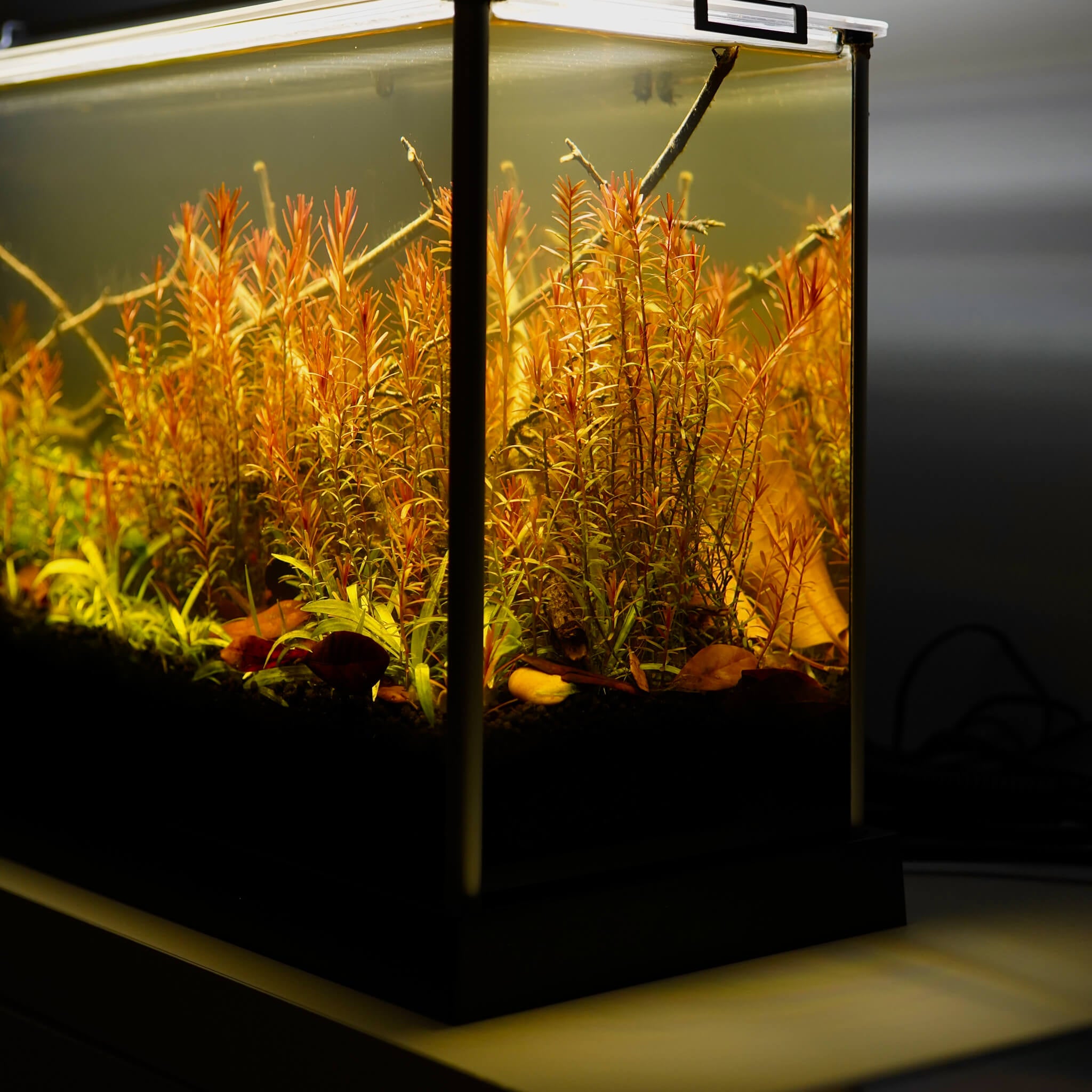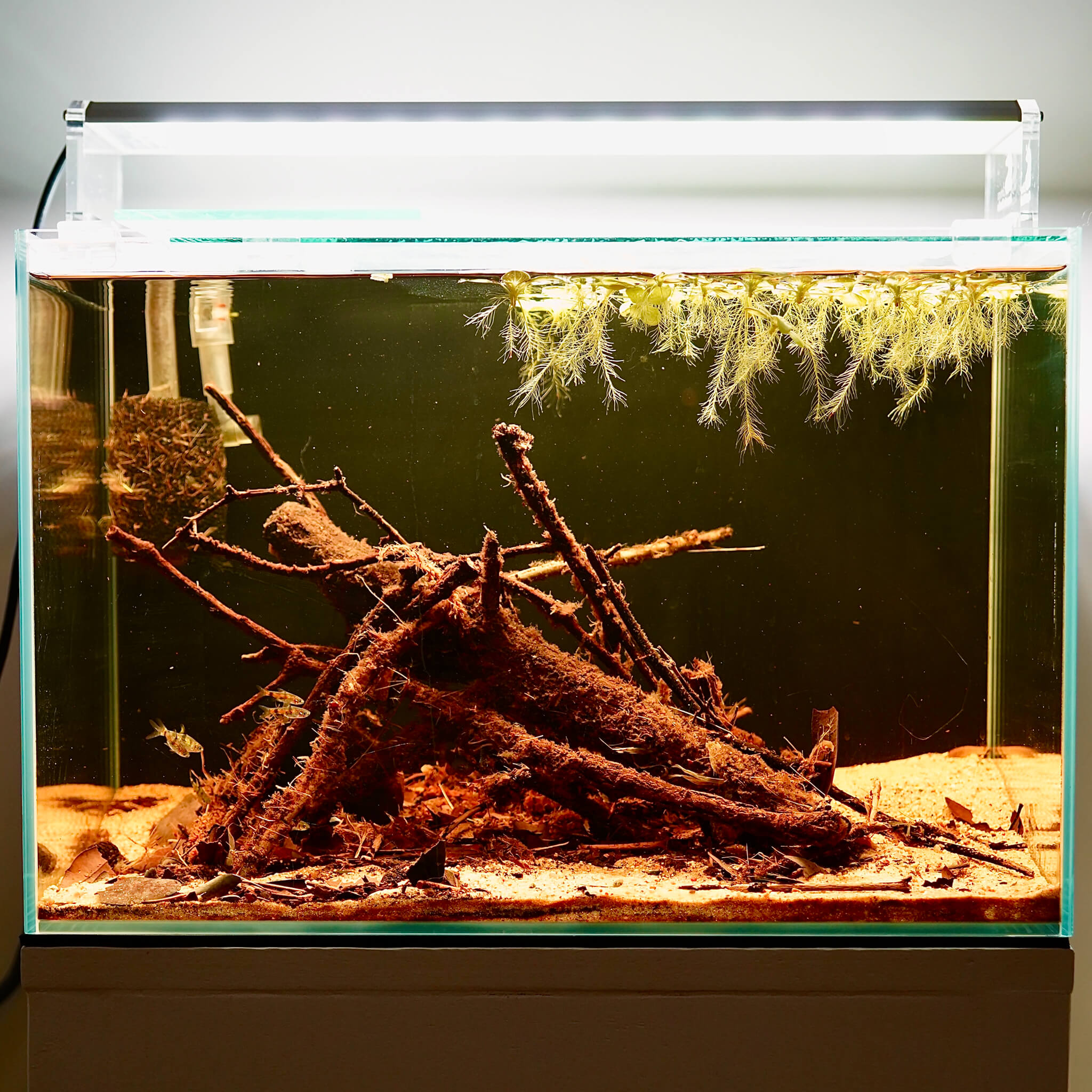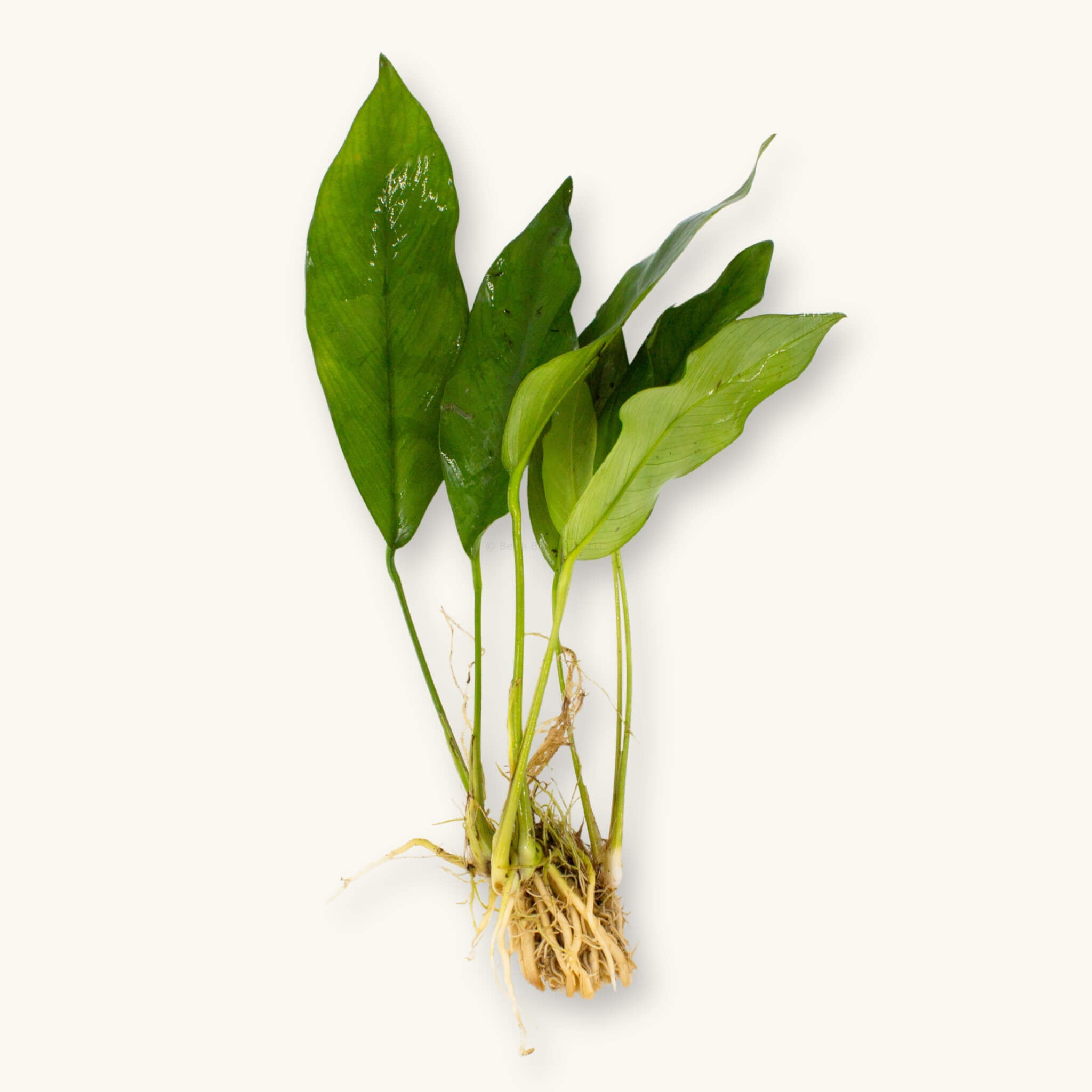
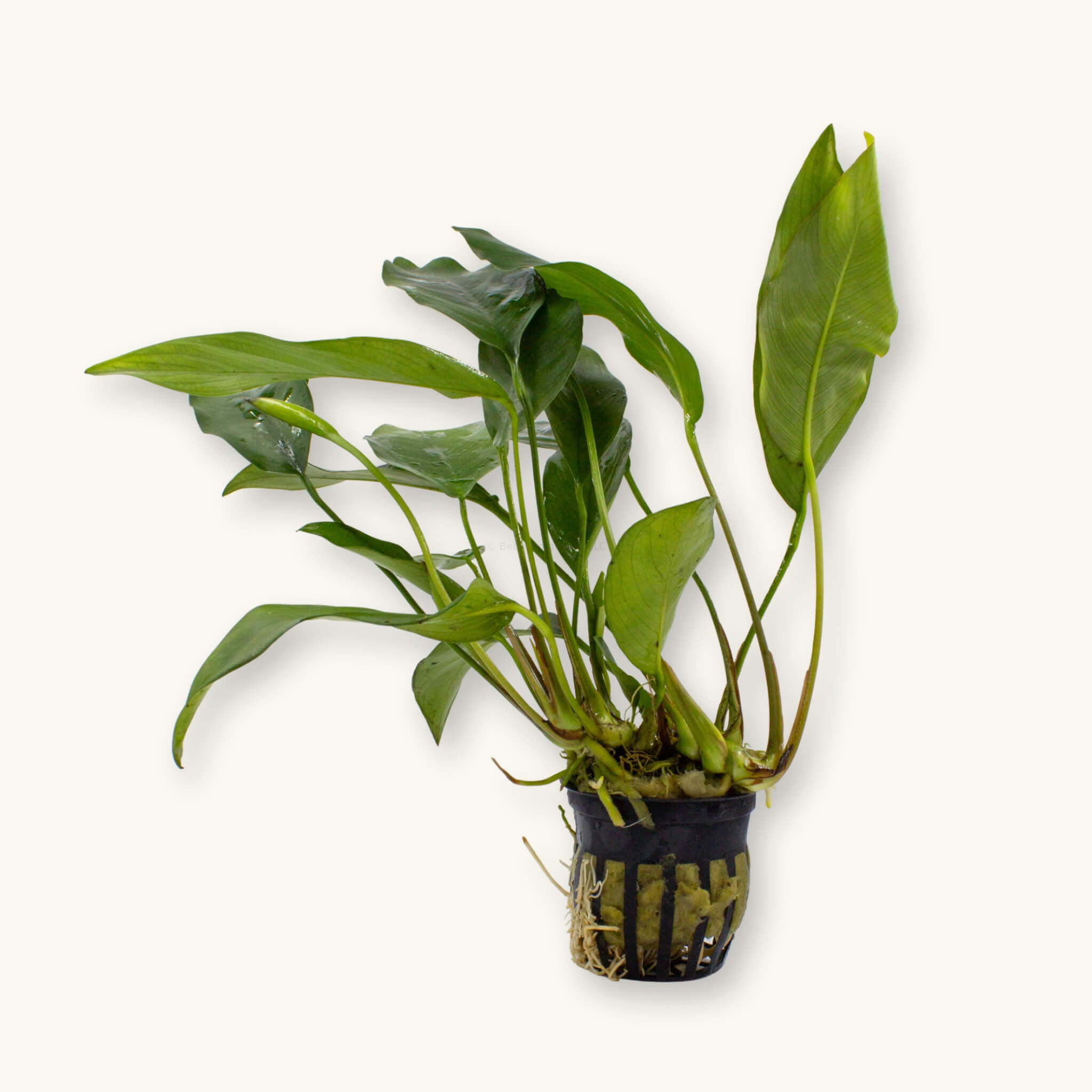
Anubias Nancon
Anubias Nancon
Scientific Name: Anubias sp. ‘Nancon’
Common Name: Anubias Nancon
Anubias Nancon is a cultivated hybrid originally developed by aquarist Bob Gasser and maintained through nursery propagation. This variety combines the resilience of Anubias barteri “Nana” with the elongated leaf shape of Anubias afzelii “Congensis,” resulting in a plant with narrow, pointed leaves. Because of its medium to large growth pattern, this low-tech anubias is ideal for the midground to background of the aquarium, or as the main center piece of a nano botanical method, blackwater, or biotope aquarium.
Like all Anubias species, Nancon thrives under low to medium light conditions and is remarkably adaptable to a wide range of water parameters. It is especially well-suited for blackwater, botanical method, and biotope aquariums, where it can be attached to driftwood, rocks, or even larger seed pods to help 'blur the lines' between hardscape and plants. Because its rhizome must remain above the substrate, this plant anchors best to surfaces where its roots can slowly creep and secure themselves.
Over time, Nancon develops dense clumps that provide cover for small fish and shrimp, while integrating into the varied textures and leaf shapes of the planted aquarium. Propagation is simple: the rhizome can be divided into sections, each carrying several leaves, and replanted or attached elsewhere to expand its footprint in the aquarium. With its strong leaves and steady growth, it also resists grazing from most fish and invertebrates, making it a durable, long-lasting choice for aquarists of all skill levels.
Caring for Anubias Nancon in Blackwater Aquariums
Care Level: Easy
Lighting Requirement: Low to medium conditions
CO₂: Not required; grows steadily without supplementation
Growth Rate: Slow to medium; steady rhizome expansion over time
Tank Placement: Foreground to midground; attach to hardscape for best results
Native Habitat: Hybrid origin; cultivated for aquariums, with traits similar to West African Anubias species
Tint Tolerance: Thrives in low to high tannin environments typical of blackwater aquariums
All Plants may contain snails or snail eggs. We keep them in all of our tanks for the benefits they provide. Our blackwater aquarium plants are provided by H2OPlants in adherence to their Shipping and DOA Policies. Your curated selection will arrive in their packaging separate from your botanical & merch orders.

Anubias Nancon
contrast the tint with greenery
While the aesthetic appeal of tinted waters can be quite attractive to us, the recreation of nature—which includes both submerged and emersed plants—is the end goal. Flora helps to improve water conditions, feeding patterns, spawning displays, and territory building.
Aquatic Plant FAQs
DOA Policy
Please ensure that you add a heat pack or cold pack to your orders if temperatures in your area are above 90°F or below 40°F. Click for more info on our DOA Policy.
Are these plants duckweed and snail free?
All Plants may contain snails or snail eggs, small macroinvertebrates, and duckweed. We keep them in all of our tanks for the benefits they provide. We have experienced the presence of small snails, ostracods, daphnia, and beneficial detritus worms.
Are your plants only for tinted water conditions?
Nope! All of our plants will grow perfectly in untinted aquariums that have CO2 and aquasoils, or low-tech planted aquariums. Our selection, though, is optimized for emersed plant growth and low- to medium-tinted water environments.
What is your aquatic plant shipping schedule?
We’re a small company and ship Tuesdays & Thursdays only. Orders placed Wednesday–Sunday → Ship Tuesday. Orders placed Monday–Tuesday → Ship Thursday
Are your plants just for bettas?
Nope. Our aquatic plants are safe for almost all aquariums, terrariums, vivariums, and paludariums. Many of our plants can be grown emersed in filter compartments, vivariums, or incorporated into wabikua.
What are Tannins?
Tannins are natural compounds released by leaves, seed pods, and bark as they decompose in water. They soften water, gently lower pH, and create the characteristic tea-stained tint found in blackwater habitats. But their role goes far beyond color—tannins fuel beneficial bacteria, fungi, and biofilms, which form the foundation of a healthy ecosystem. They also offer mild antifungal benefits and help reduce stress in fish by replicating the natural conditions they’ve evolved in. At their core, tannins are plant-derived antioxidants that connect your aquarium to the same processes at work in wild flooded forests and streams.




